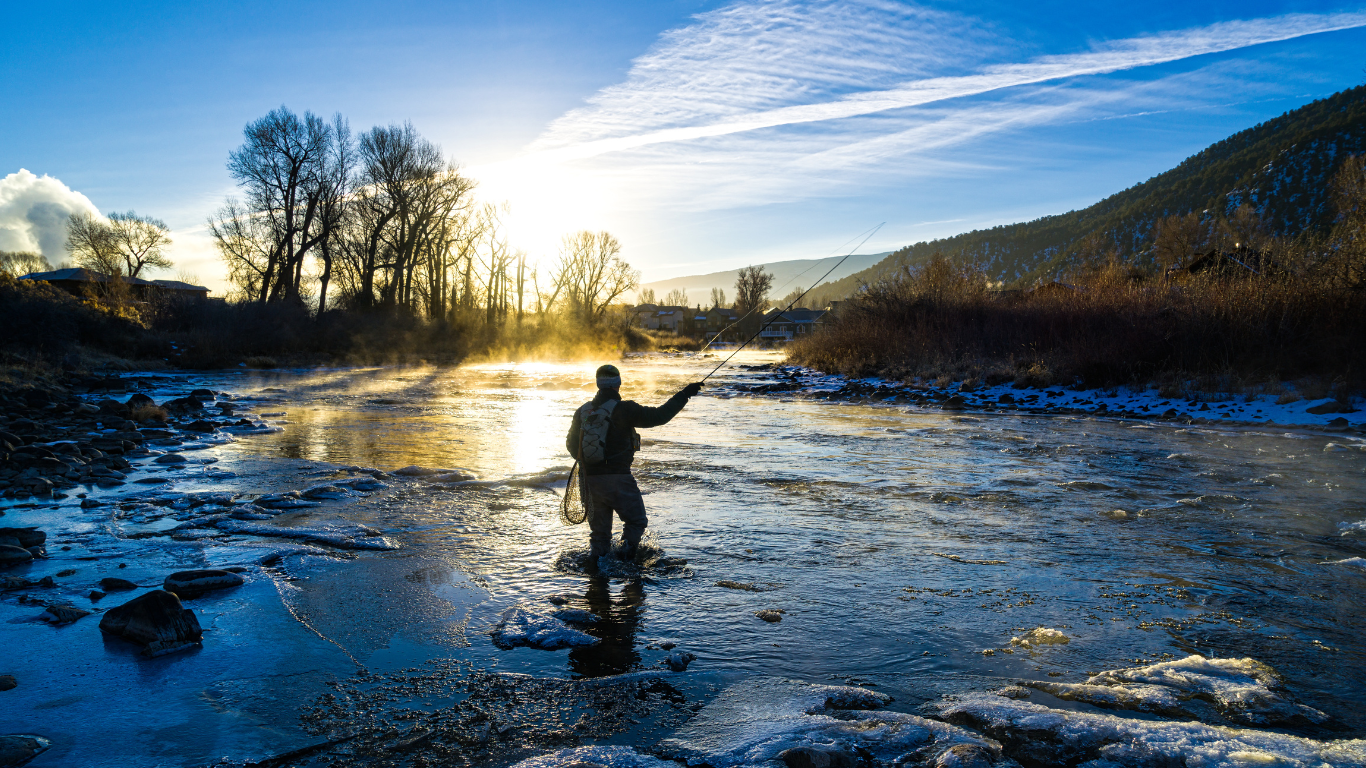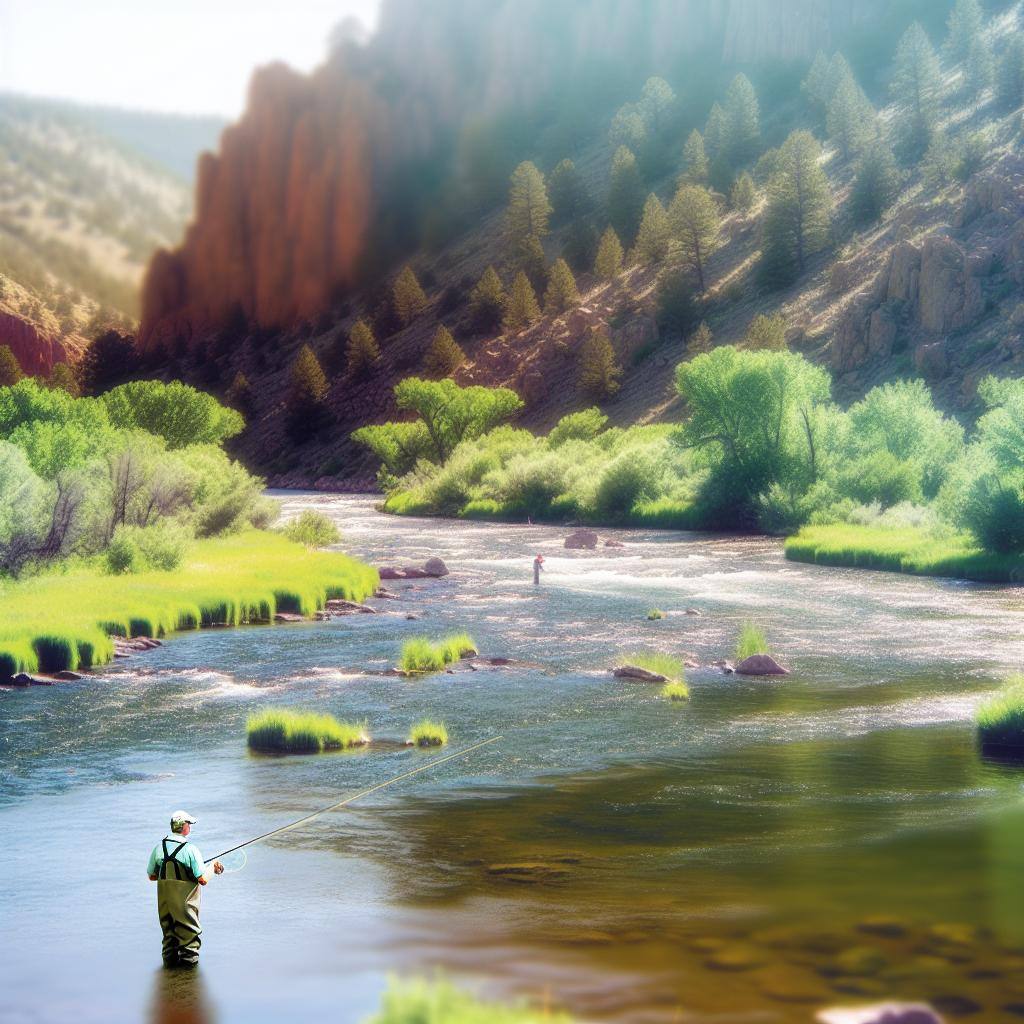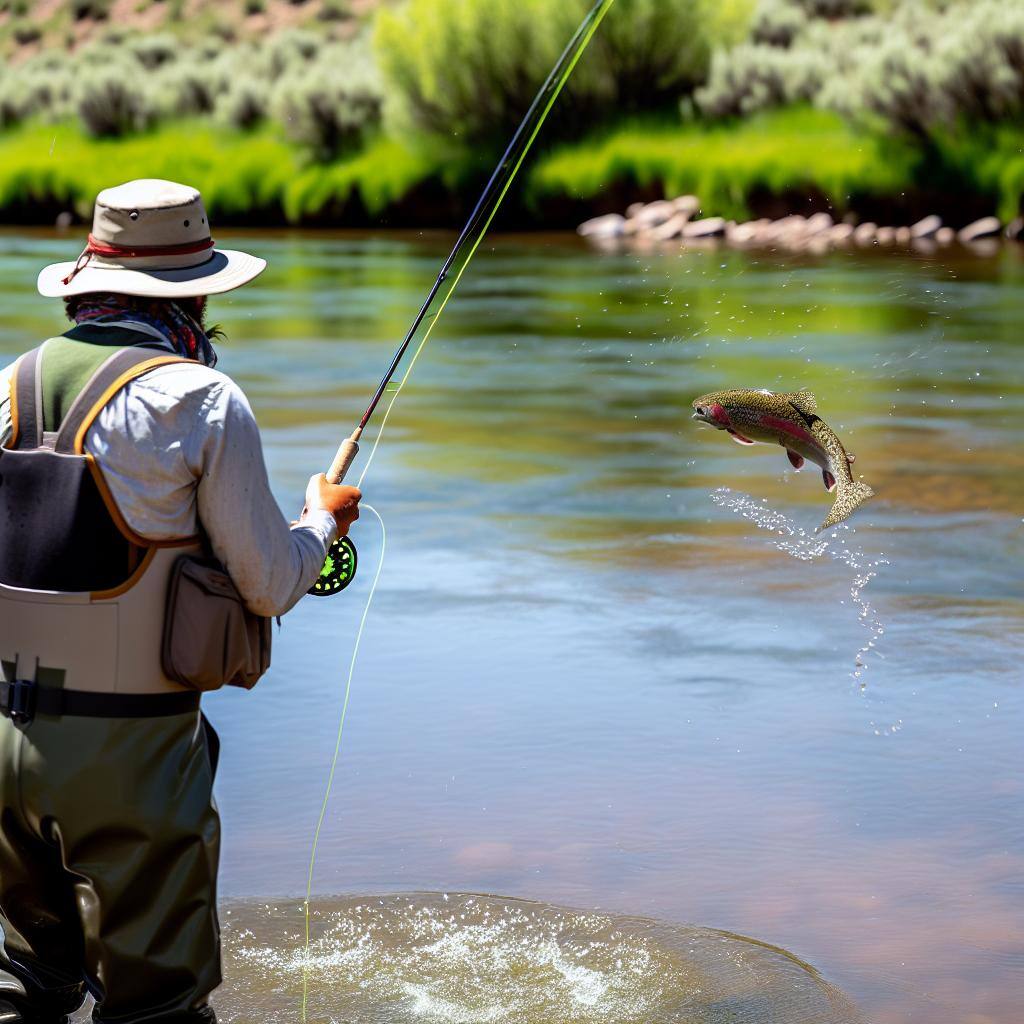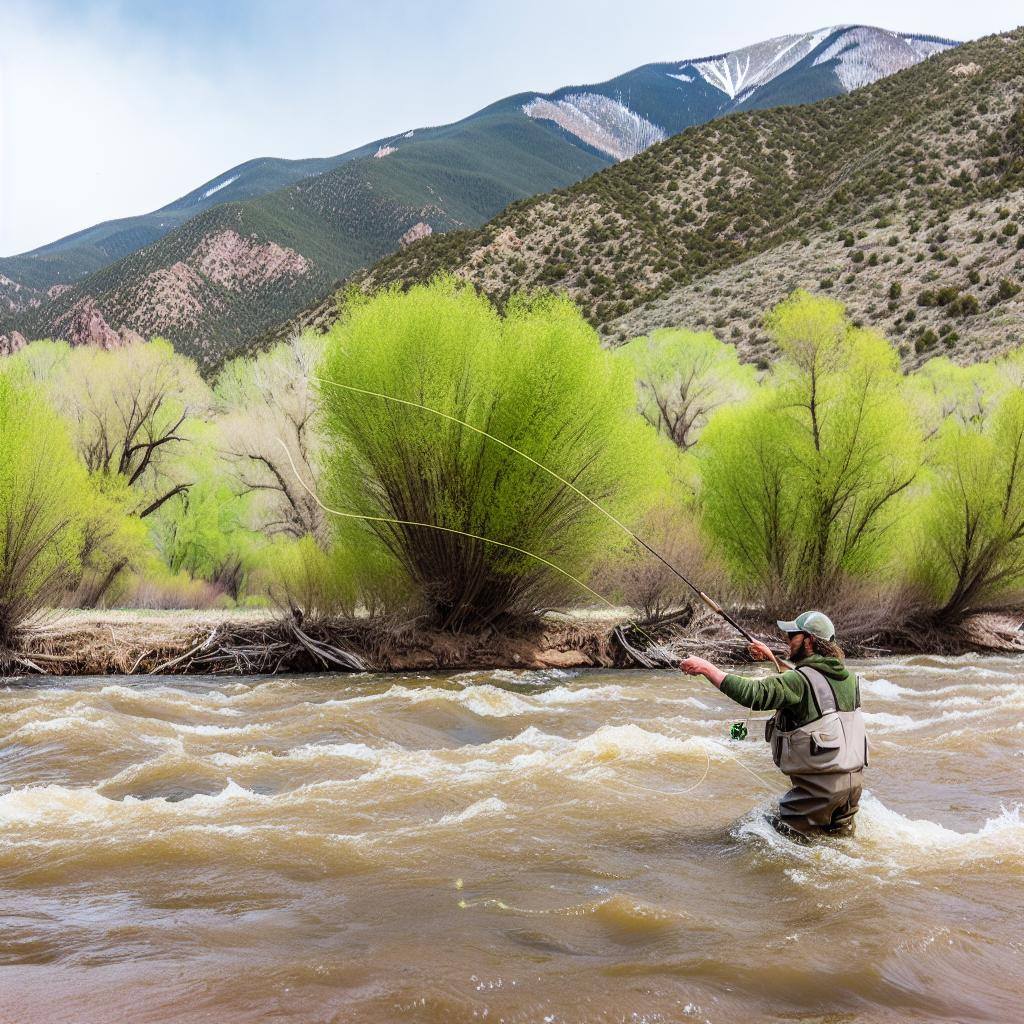Embark on Your Fly Fishing Journey with Ease!
This guide provides beginners with vital tips for successful fly fishing adventures, with a dash of wit and plenty of practical advice.
Choosing the Right Gear: What You Need to Start Fly Fishing

When starting out with fly fishing, it's crucial to have the right gear. Think of it as your fly fishing toolkit. Here's a detailed rundown of the essentials:
- Fly Rod: Choose a rod that suits your fishing style and the type of fish you'll be targeting. A 9-foot, 5-weight rod is a great all-around choice for beginners. For a versatile option, check out Orvis Fly Rods.
- Fly Reel: Look for a reel that matches the weight of your rod and has a smooth drag system. This ensures you can handle the fish without breaking your line. Browse some good options at REI Fly Reels.
- Fly Line: A weight-forward floating line that matches the weight of your rod will help you cast accurately. For more information, visit Bass Pro Shops Fly Lines.
- Leaders and Tippet: Leaders are tapered monofilament lines connecting your fly line to your fly, and tippet is a thinner line attached to the leader's end. For a comprehensive selection, see Field & Stream Leaders and Tippet.
- Flies: Start with a variety of basic patterns, such as nymphs, dry flies, and streamers, matching the insects and baitfish in your fishing area. Check out Fly Fisherman Fly Patterns.
Top 3 Gear Tips:
- Get a Versatile Rod: A 9-foot, 5-weight rod is perfect for various fishing scenarios.
- Smooth Reel: Ensure your reel has a smooth drag system for better control.
- Basic Flies: Stock up on nymphs, dry flies, and streamers.
By having the right gear, you'll be well-prepared for your fly fishing adventures and increase your chances of success.
For more detailed gear recommendations, visit our Gear Essentials page.
Understanding the Basics of Fly Casting Techniques

Mastering fly casting is essential in fly fishing. Here's how to do it with flair:
- Grip: Hold the rod with a relaxed grip, thumb on top, and fingers wrapped around the handle. Think of it as holding a delicate wine glass. Learn more at Orvis.
- Backcast: Start with the rod tip low, slowly bring it back, and stop at a 45-degree angle to load the rod with energy. Imagine you're drawing an elegant arc in the air. Watch this video for a visual demonstration.
- Forward Cast: Accelerate the rod forward and stop abruptly when fully extended, releasing the energy to propel the line forward. It's like flicking paint off a brush. Take Me Fishing guide offers more tips.
- Timing: Practice smooth, fluid motions to achieve accuracy and distance. It's all about rhythm and grace.
Top 3 Casting Tips:
- Relaxed Grip: Hold your rod with a relaxed grip for better control.
- Energy Transfer: Use the backcast to load the rod with energy.
- Smooth Motion: Focus on smooth, fluid movements for accurate casting.
By mastering these basic casting techniques, you'll be able to present your flies effectively and improve your chances of catching fish.
For more in-depth tips, check out our Beginner Tips and Guided Trips pages.
The Importance of Water Reading Skills
Reading the water is like deciphering a mystery novel. Here's why it's crucial:
- Understanding Currents: Different parts of a river or stream have different currents. Identify where fish are likely to be holding and feeding. Learn more at Colorado Parks & Wildlife.
- Identifying Structure: Look for features such as rocks, logs, and undercut banks that provide cover for fish. Check out Orvis's guide.
- Observing Insect Activity: Pay attention to the water's surface for signs of insect hatches to select the right fly. Fishing Booker explains more.
- Adjusting Presentation: Based on your observations, adjust your casting angle, drift, and retrieve to maximize your chances of hooking a fish. Colorado Trout Hunters has more insights.
Top 3 Water Reading Tips:
- Currents: Learn to read river currents to locate feeding fish.
- Structure: Identify structures like rocks and logs where fish hide.
- Insect Activity: Observe insect hatches to choose the right fly.
Developing your water reading skills will make you a more effective and successful angler. For additional strategies, see our Trout Fishing Guide and Seasonal Tips pages.
Fly Selection: Matching the Hatch

Fly Selection: Matching the Hatch
Matching the hatch is an art form in fly fishing. Here's what it means and why it matters:
- Insect Life Cycles: Aquatic insects go through different life stages, from nymphs to emergers to adults. Matching the hatch means selecting a fly that imitates the insects currently available to the fish. Check out Orvis Fly Patterns.
- Presentation: Fish can be selective when it comes to feeding. By presenting a fly that closely matches the insects they are actively feeding on, you'll increase your chances of getting a bite. Field & Stream Fly Selection provides more insights.
- Fly Patterns: There are countless fly patterns available, each designed to imitate a specific insect or baitfish. Experiment with different patterns to find what works best in your fishing area. Fly Fisherman Hatch Matching.
- Observation: Pay attention to the water for signs of insect activity, such as rising fish or insects floating on the surface. This will give you clues about the insects the fish are feeding on. Trout Unlimited Hatch Guide.
Top 3 Fly Selection Tips:
- Life Cycles: Understand the life stages of aquatic insects.
- Selective Fish: Match your fly to the insects fish are feeding on.
- Experiment: Try different patterns to see what works best.
Matching the hatch requires observation, knowledge of insect life cycles, and the right selection of flies. It's a skill that can greatly improve your fly fishing success. Explore more on our Fly Selection and Seasonal Tips pages.
a skill that can greatly improve your fly fishing success. Explore more on our Fly Selection and Seasonal Tips pages.
Catch and Release Best Practices: Ensuring Fish Survival
Catch and release is an important practice in fly fishing to ensure the survival of fish populations. Here's how to do it right:
- Handle Fish Gently: Wet your hands before handling a fish to minimize damage to their protective slime coating. Avoid squeezing or gripping the fish tightly. Orvis Catch and Release Guide.
- Use Barbless Hooks: Barbless hooks are easier to remove and cause less harm to the fish. Consider crimping down the barbs on your flies or using barbless hooks. Field & Stream Barbless Hooks.
- Minimize Fight Time: Play fish quickly and avoid exhausting them. The longer the fight, the more stress the fish experiences. Take Me Fishing.
- Keep Fish in the Water: If you need to take a photo, submerge the fish as much as possible and handle it with wet hands. Quickly release the fish back into the water after the photo. Fly Fisherman Photo Tips.
- Revive Fish Properly: If a fish appears tired after being caught, hold it gently in an upright position facing into the current. This allows water to flow over the gills and helps the fish recover. Trout Unlimited Fish Revival.
Top 3 Catch and Release Tips:
- Handle Gently: Wet your hands and avoid tight grips.
- Use Barbless Hooks: Easier removal and less harm to fish.
- Minimize Fight Time: Play fish quickly to reduce stress.
This guide provides beginners with vital tips for successful fly fishing adventures, with a dash of wit and plenty of practical advice.
.png?width=300&height=100&name=Copy%20of%20Rise%20Beyond%20Logo%2012.31.24%20(300%20x%20100%20px).png)
.png)


